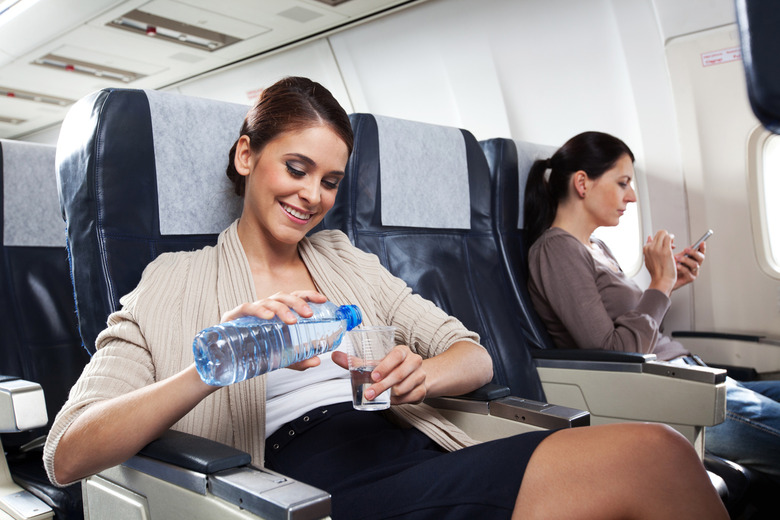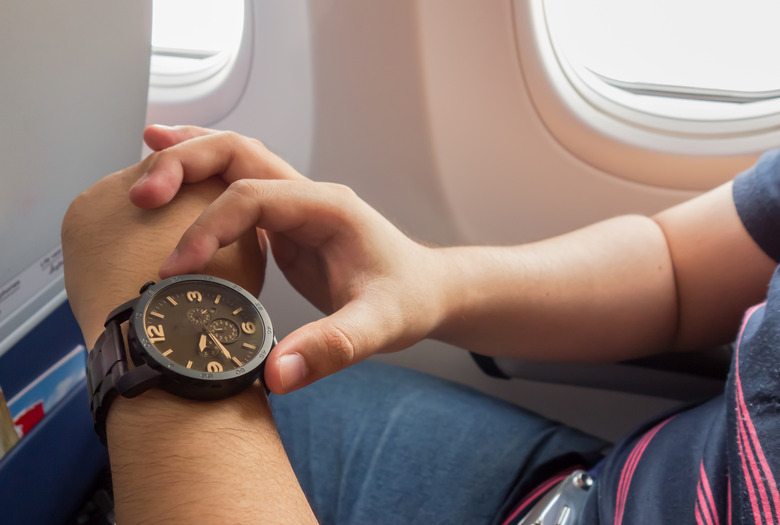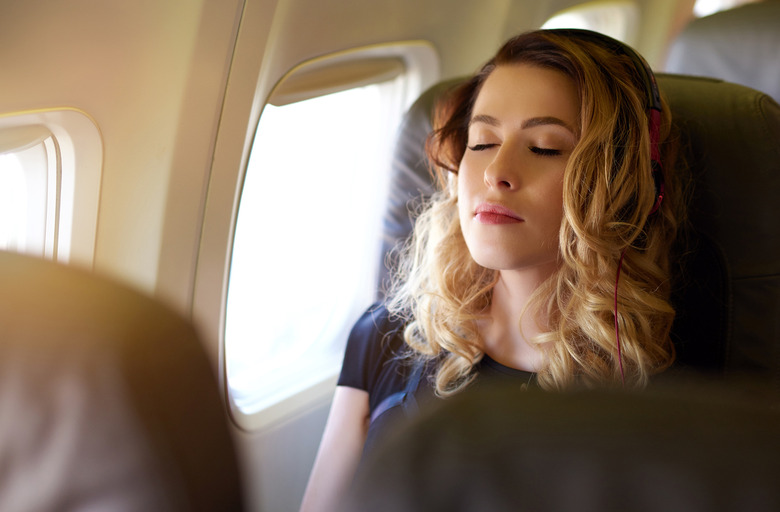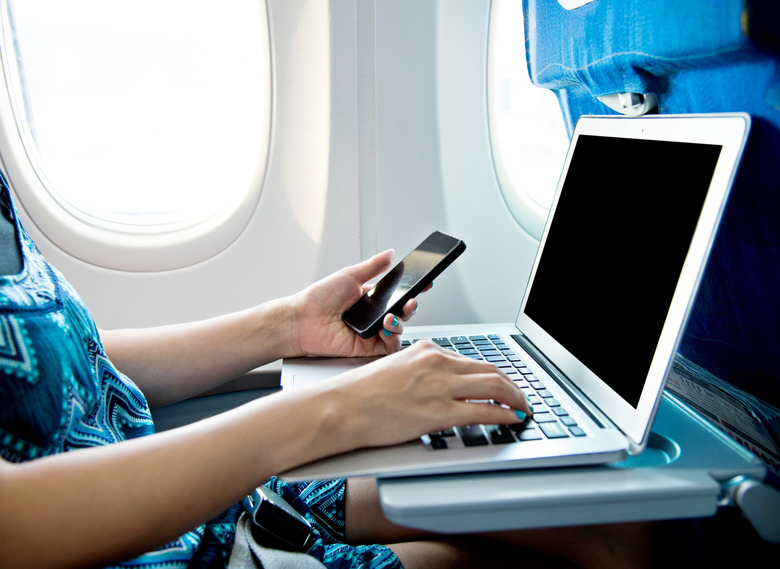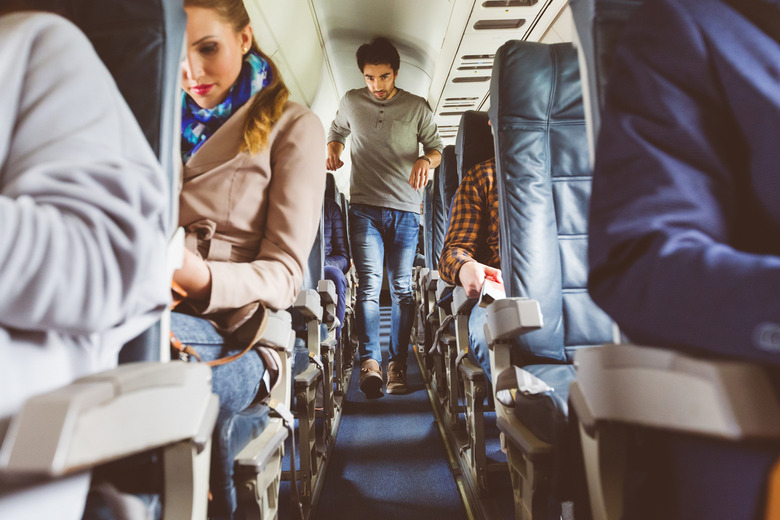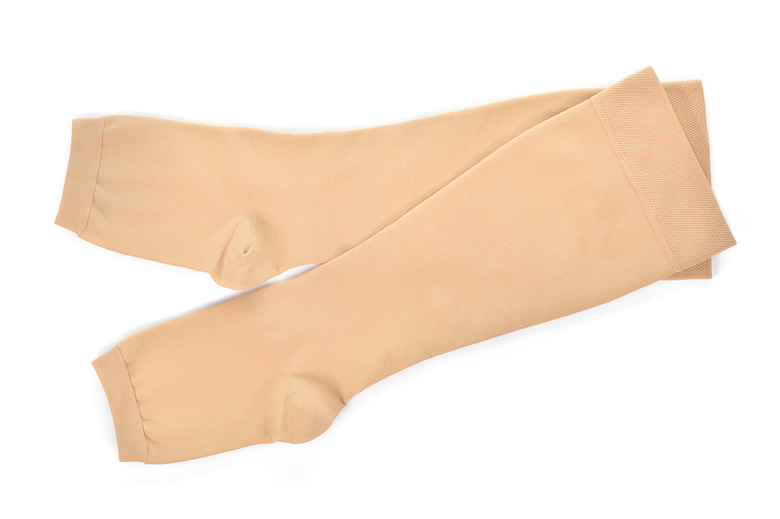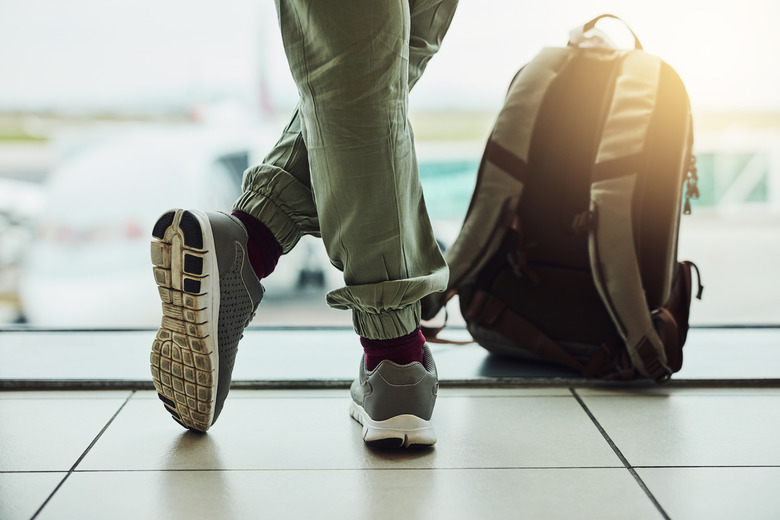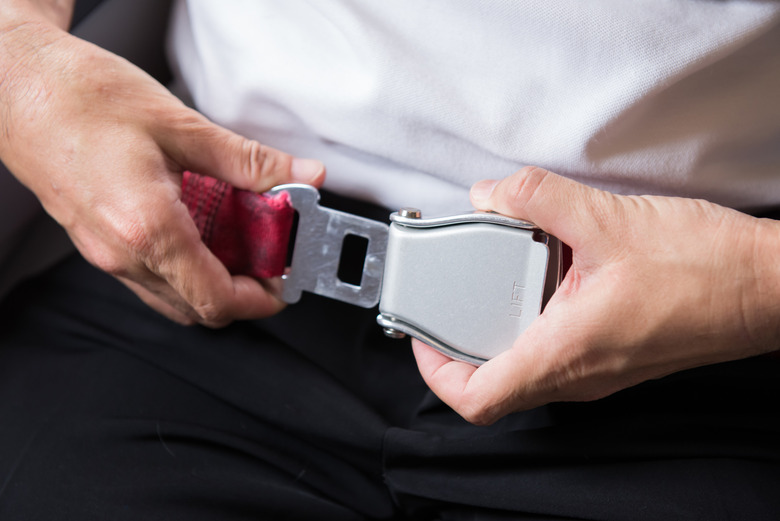How To Stay Safe On Any Flight Gallery
There's a lot that goes into flying at every stage — before, during, and after. Once you've made sure your passport is still viable, landed some awesomely cheap tickets, and packed your bags properly, you still have to navigate getting to the airport, checking in, and dealing with airport security. Air travel safety doesn't end there, of course; the most important thing to remember is safety on the flight itself.
Despite the fearmongering that often occurs along with news reports of terrifying airline incidents, air travel is actually pretty safe. It doesn't hurt, however, to make sure you're doing all that you can to keep yourself safe from injury or worse. There are things you can do to make sure you don't get sick or hurt as well as precautions you can take so that you're alert and ready in case the worst happens to the plane. These helpful and simple tips will help you learn how to stay safe on any flight.
Don’t Drink Alcohol
At the very least, you should consider drinking very little while flying, if not avoiding it entirely. This is important even if you feel you can handle your alcohol very well, as it's easier to get drunk at a higher altitude. Alcohol can give you bloating, making you dehydrated, or even incapacitated, and you need to have the ability to be alert in case of an emergency.
Don’t Drink the Tap Water
When the flight attendant asks you if you would like some tea or coffee, we recommend you skip it. The water on board may come from a tank that isn't cleaned as often as it should be, resulting in dirty and stale water. In fact, the Environmental Protection Agency found that one in eight American airplanes did not meet their standards for water safety, and that the tap water supply on 12 percent of commercial planes tested positive for fecal bacteria. If you're really thirsty, we recommend you ask for bottled water instead.
The ‘Plus 3, Minus 8’ Rule
According to American journalist Ben Sherwood, author of The Survivors Club: The Secrets and Science That Could Save Your Life, 80 percent of plane crashes occur either in the first three minutes or the last eight scheduled minutes of a flight. During this time, you should stay vigilant. Make sure you're awake, keep your shoes on and your headphones off, and make sure that your seat belt is securely fastened in the proper position. As mentioned before, we also suggest you don't drink during the flight for this very reason.
Read the Safety Card
Don't assume you know everything there is to know in case of an emergency. Airlines and aircraft can vary in their safety procedures, so the safety card tucked into the seat back pocket in front of you is a valuable source of information. Go over it to ensure you know the right instructions in case something goes wrong, and make sure you listen to the preflight safety demonstration as well — flight attendants hate it when you ignore their directions, and for good reason.
Stay Calm
Panic can impair you in any situation. Take a deep breath, distract yourself with a hobby, or even try a hydrating sheet mask to calm your nerves. More anxiety means you're more prone to make mistakes that could risk your safety, and in case of an emergency, you also need to have all your wits about you. If it's turbulence that's giving you the jitters, there's also a simple trick that can keep you calm.
Stow Away Your Electronics When Asked
Everyone knows that you have to turn off your cell phones to avoid interference with the pilot's radio signals. You've probably also wondered how that could possibly apply to electronics such as your laptop or iPad as well. But your flight attendants ask you to stow away all your other electronics for a different reason upon takeoff and landing — they're potential projectiles that, at hundreds of miles per hour, could cause serious damage. That's why you need to keep your belongings under the seat in front of you until the flight attendants say otherwise, even if there's an empty seat next to you. It's also the reason why a flight attendant telling you to buckle up your toddler instead of just holding them in your lap isn't just being a stickler for rules. Unbuckled children can easily become projectiles.
Stretch Your Legs
While staying seated while the seatbelt sign is on is advisable, so is stretching when it's not. Sitting during a long flight can be really uncomfortable, downright painful, or even dangerous as it decreases blood circulation, which can cause swelling or blood clots. Avoid this by taking a walk up and down the aisles every so often to stretch your arms and legs and do some foot and leg exercises from your seat to keep your circulation going.
Wear Compression Socks
Another way of ensuring you don't get any blood clots — or deep vein thrombosis as it's known when it happens in deep veins such as those in your legs — is wearing compression socks. Even if you're not at risk of DVT, compression socks can help with the painful swelling that many flyers get in their legs after a long flight. By slightly squeezing your legs, compression socks increase your circulation by helping blood move along through your veins and muscles.
Wear Something Comfortable
It's both stressful and uncomfortable to fly; try to give yourself as much comfort as possible by wearing something you're comfortable lounging in, especially so that you can sleep well. Most important for safety, however, is that you wear comfortable clothes that you can easily move in, shoes that are easy to put back on (and don't have heels), and something you don't need a belt for (especially to move faster through that pesky airport security). Long sleeves and pants are also a good idea to protect your body from friction or flames, if worse comes to worst.
Wear Your Seat Belt
It may seem like the most obvious safety measure, but many take the relative safety of a plane for granted and neglect the basics. Make sure you're wearing your seat belt at all times when you're not up to go to the bathroom or giving your legs some much-needed stretching (which should only be when the seatbelt sign is off), and make sure you're wearing it properly. For every centimeter of slack that your seat belt has, the gravitational force you'd experience in a crash triples. You should also keep the seat belt fastened so that its upper edge is right below the upper ridge of your pelvis, as this will help brace you much better than your stomach. You should also maybe consider giving it a wipe-down beforehand, since it's one of the dirtiest things on your airplane.
More From The Daily Meal:
25 Crazy Facts About Airplane Food
Your Flight Attendant Will Hate It If You Do Any of These Things


